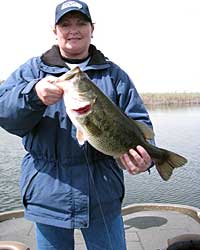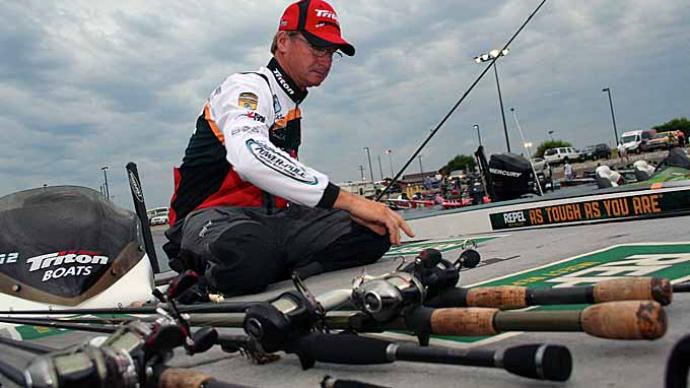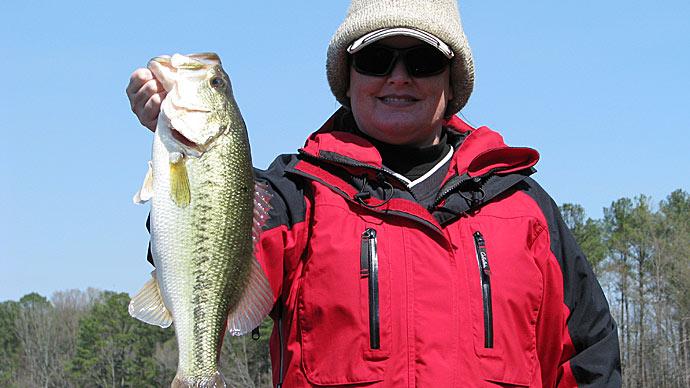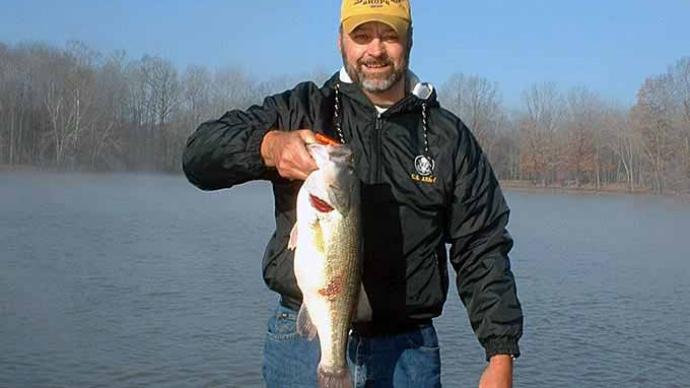
Winter is approaching fast here in the Pacific Northwest, and water temperatures will drop into the mid-40s on most of our takes. It's a time when many abandon bass fishing for other interests. Many anglers are chasing other types of fish such as steelhead and salmon. Walleye fishing is also a good choice for the winter angler here in the Northwest, and many hunting sports are still going strong.
It is easy to see, that with all the options we have, that winter bass fishing is not as popular as some of the other options we have for cold weather sports.
Winter bass fishing in the Northwest is generally a tough proposition at best. I still fish for bass in the winter when the weather isn't too bad. You have to measure success with a different yardstick this time of year. A successful day might be a couple of nice fish. I would like to share some of the things I have learned about wintertime bass fishing in the Northwest.
First of all, it takes a serious attitude adjustment to fish for winter bass. With the cold water temperature comes a slow down in the bass' metabolism. The strike zone shrinks with every degree the temperature drops. The key ingredient for success is, you must fish slowly. A bass will not move very far to strike and success improves the longer the lure is in the strike zone. Not many anglers have the patience for this type of fishing.
Most of our natural lakes tend to be shallow and the winter bass will seek the deepest water available. Steep drop-off areas with vertical structure are good places to look for winter bass. Creek channel ledges and rock bluff-type areas will hold bass on most of our lakes. Vertical structures like pilings and bridge abutments are also good. A favorite of mine on our coastal lakes are wooden train trestles. Vertical structure allows bass to move up and down, depending upon the weather, without using much energy.
I used to think that the only lure for wintertime fishing was a 3/8-ounce jig and pig combination fished at a snail's pace. That is still a successful method to catch winter bass, but I have learned a few other techniques as well. At times, bass will resist hitting larger lures and downsizing is the key. I have had good success using small 1/8-ounce jigs in both hair and rubber skirts, with small pork or plastic trailers. The rigged lure is about 3 inches long. I normally fish this little combination on 8- to 10-pound-test line, with a G-Loomis 722 spinning rod. Normally, I won't be fishing more than 18- to 20-feet deep, and the light lure falls slowly which helps you to slow down. After the lure hits the bottom, let it sit for as long as you can stand it. For me, that's about 15 seconds and then I move the lure slowly, with frequent long pauses.
When bass are holding on vertical structure, such as bridges or pilings, I have another technique that has been successful for me on many occasions. Drop a 1/16- to 1/8-ounce marabou crappie jig down along the side of the structure. Drop it to the bottom and don't move it. The small amount of movement and water current will move the marabou. Many times, this is all you need to trigger a strike. I have had good success on black or white marabou jigs. If you don't get a bite, reel up about two feet and hold it still again. Keep repeating this until you determine the depth the bass are holding at. Light spinning tackle and light line help to balance this presentation.
The rig I like to start with whenever I'm fishing rock bluffs or creek ledges is the split-shot rig. It is an excellent cold-water presentation and will produce results when all else fails. I like a small 4-inch straight tail worm in dark colors for winter. Experiment with the distance you place your shot above the worm. Sometimes, a short distance of only a few inches will work and other times a longer space between the lead and lure works best.
One other method is shaking a light worm rig with or without a glass bead. I will use two different rigs for shaking in cold water. I rig one with a lead sinker without a bead and the other with brass and glass. For some reason, one will usually out fish the other. The key for these rigs is very small movement of your rod tip when shaking. Small 1-inch movements are required. I have a friend who says you try to lift the sinker off the bottom without lifting the worm. I am going to experiment with a dropshot rig this winter. It should be an excellent method for winter bass. Give winter bass fishing a try, the air is crisp and the lakes are quiet. Chances are good that you'll be the only angler on the lake.
Reprinted with permission from Bass West Magazine




